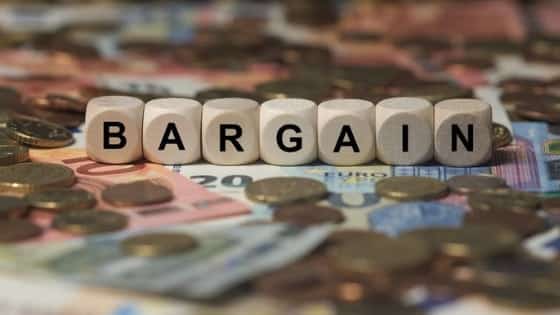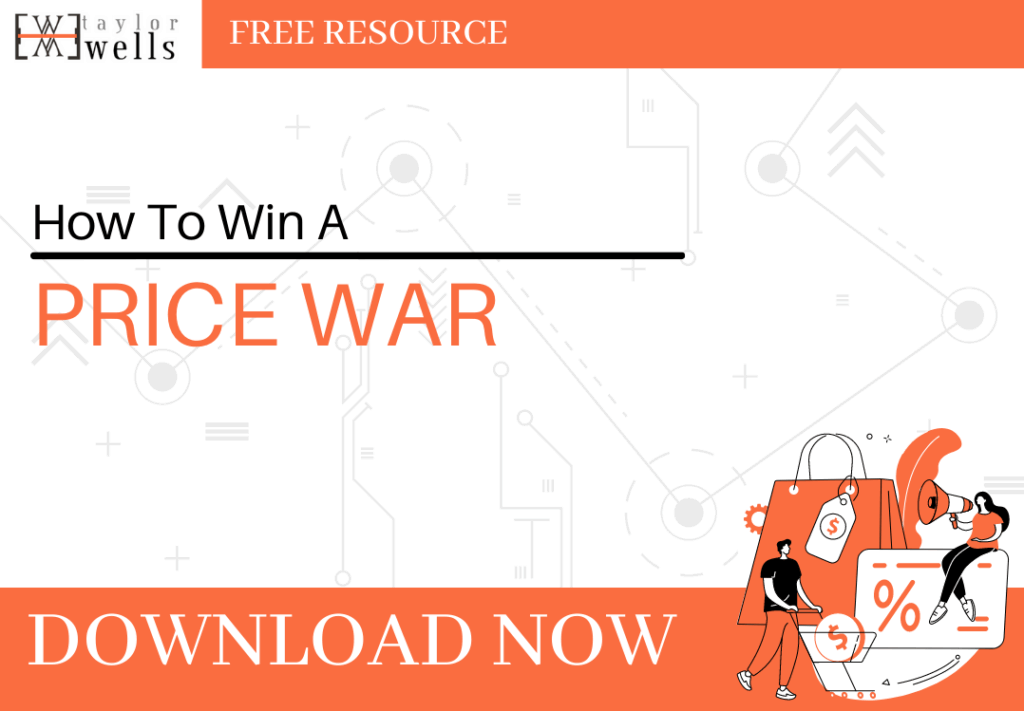
When we think about haggle price many of us will instantly think of a hugely discounted Persian rug sale sign, that reads something like:
“Closing Down Sale. Buy Now – All stock 95% off RRP.”
>Download Now: Free PDF How to Drive Pricing Strategy to Maximise EBIT Growth
As Cialdini writes in “Influence Psychology of Persuasion,” people love feeling like they’ve got a bargain. Haggle price and receiving a significant discount for your haggle price efforts give people a dopamine rush, which many find difficult to resist. This can also be related to pricing policies by stores such as everyday low pricing.
What’s more, the Persian rug salesman knows this and offers us exactly what we want (i.e., a considerable discount off an expensive hand-made rug). We feel we’re getting a bargain, what’s more, we feel good that our haggle price efforts have paid off.
Capability Building Programmes For Pricing & Sales Teams!
However…
In reality, it’s the Persian rug salesmen that’s having the last laugh. They’ve just used a frame and anchor technique. They’ve inflated the Recommended Retail Price (RRP) to offer you a sizeable discount without giving away anything.
Moreover, you’ve walked away feeling like you’ve got yourself a bargain when you’ve probably paid the real price or even a bit more for the rug. This is a classic example in the use of psychological price points
In this article, I will be answering some frequently asked questions about haggling. I will also give you some tips and tricks to help you prepare the next time you are forced to haggle with a customer or as a customer.
Haggle price definition
Haggling is a zero-sum game in which both parties are hedging their bets (or risk). In many ways, haggling is a clumsy approach to defining value using a series of compromises, concessions, and threats along the way.
Lots of prices and offers are thrown out there until someone bites. Then, lots of concessions are generally made, followed by a series of justifications to support flimsy claims about value and price.

Why do customers haggle?
A customer haggles with you because they don’t really know the real offer from the opening offer (or RRP) or even how to buy from you.
Why do salespeople haggle with customers?
Retailers haggle with their customers because they don’t really know how their customers value their products or what they should be doing to understand their customers’ needs.
The main disadvantage of haggle price seeking
Haggling has no pre-defined parameters to frame value or standardise price procedures to guide the discussion. Both parties go blindly into a negotiation which is usually awkward, crude and combative – otherwise known as positional negotiation.
Price match guarantee: Opposite of haggling
The opposite of haggling is “price match guarantee.” Haggle price differs from price matching because a price match guarantee clearly states the parameters of the price negotiation well in advance of any pricing discussion with the customer.
Retailers have generally thought about the terms of the price match guarantee to lull the more price-sensitive customers into a false sense of security that prices are really low. Many retailers know that the majority of customers do not read the fine print properly or are ineligible to make a legitimate claim.
Retailers also know that a particular type of customer (i.e., a price-sensitive customer) will buy from them just because they offer a price match guarantee. This is because price-matching guarantees give the retailer a low-price image in the minds of consumers. Whether this is true or not is another thing entirely. Interestingly 86% of retailers that offered to match the lowest price did not provide the lowest price.
It seems retailers are prepared to make big claims to get our attention and lure us in. However, many retailers that publicly announce pledges to match all prices also refine their terms and requirements from consumers.
It is not uncommon for retailers to reject price match claims if the specific evidence, proof or terms were not met to the tee – guilty until proven innocent approach or the retailers haggling back with mass consumers.
Introduction to Price Optimisation 💰 Podcast Ep. 74!
When should you haggle on price?
Haggling on price works well enough when you are negotiating infrequent or straightforward transactions like a couch or garden furniture that have low stakes, or you don’t care about your ongoing relationship with the other party.
There still is a taboo about haggling for goods in big brand retailer shops (like it’s rude or not the right thing), but this is much less than ten years ago. Shoppers still display a passive-aggressive relationship with retail pricing.
Rather than haggle, price-sensitive shoppers would still prefer to do their pre-shopper research to get low-price deals. Most shoppers will wait for excessively low promotional discounts to stockpile.
Haggling for appliances and electronics marks a turning point for shopper haggle price behaviour. Shoppers find it very easy to haggle for appliances and electronics even in department stores like Myer or JB Hi-Fi. What’s more, the sales staff even encourage it. They need to shift old stock and inventory quickly to in-store traffic using Everyday Low Pricing (EDLP) before walk-ins regain their senses and price-shop online.
Example: How to haggle for a car from a dealer
Car dealerships, for instance, have already worked out the discounts levels they can offer you. Usually, this is 8-10% off the RRP. Some reps make you work harder for these discounts than others. A lot just offer 10% discount upfront without getting anything in return.
It is easier for retailers to give you something for free rather than a refund or excessive discount. Many retailers prefer to promote bigger sizes or buy one get one free rather than a straight 25% off (or a discount that goes below the floor price).
Pricing Recruitment For Pricing Managers!
Consumers, in turn, need to look to get at least 10% discount on big spent items like cars, windows, fridges, TVs, as well as asking the retailer to throw in something else you want for free. If it’s a car, ask for a tinted windscreen, leather upholstery, better tyres, etc. If it’s a hotel room, always ask for an upgrade.
Has online retail changed the haggle experience?
Online retailing has made haggle price understanding a little easier for customers. Now we can all compare prices for the same item across many retail sites and then use this information to price beat in-store retailers in lowering their prices.
In 2012, Target was one of the first brick and mortar stores to announce that it would match prices sold by any retailers including Amazon.com and BestBuy.com.
Customers should take a more creative approach to haggling. They should be more explicit on precisely what they want and understand value beyond price. They should make a less combative stance and ask more questions. Finally, they should listen very carefully to the negotiating incentives that the salesperson is offering; to call their bluff and see through shallow price match guarantees.
〉〉〉 Get Your FREE Pricing Audit 〉〉〉
Checklist for customers on haggle price
Think carefully about the utility and purpose of the product you are buying. Don’t buy something else that does not entirely meet your needs.
- Have criteria to buy well in advance of the negotiation.
- Seek out salespeople who have good product knowledge and ability. To inform you about alternative offers and trade offers so you can find a better value
- Evaluate what the retailer is offering beyond price alone. Cheapest is not always the best – you’ll probably pay more in the long run
Conclusion
Customers need to be clear about why they want what they want. They also need to be a bit more retail savvy and understand why the retailer wants what they want. In this way, you can get the most out of their promotions and offers; and not get stung with their differential pricing strategies.
Retailers haggle with their buyers because they don’t have any idea how their customers value their goods; or what they should do to gain an understanding of their customers’ needs.
For a comprehensive view on maximising growth in your company,
Download a complimentary whitepaper on How To Drive Pricing Strategy To Maximise EBIT Growth.
Are you a business in need of help to align your pricing strategy, people and operations to deliver an immediate impact on profit?
If so, please call (+61) 2 9000 1115.
You can also email us at team@taylorwells.com.au if you have any further questions.
Make your pricing world-class!

